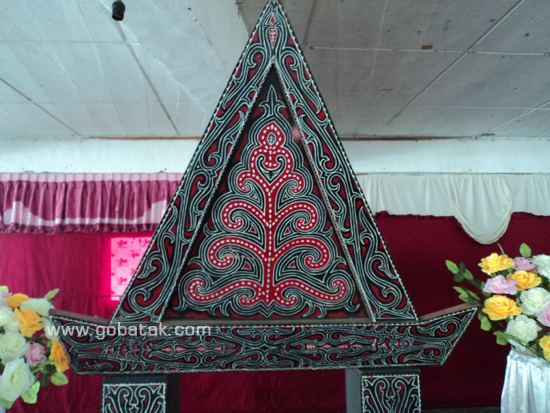Batak People From North Sumatera
The Batak is very spirited and self-confident people. From the first, they could defend their homeland against intrusion by outsiders, and only in the last 100 years that their lifestyle, and culture has undergone major changes under the influence of Christianity, Islam and colonialism. These developments did not follow a common pattern. In different regions and different periods, Batak would really experience the heir neighbors and foreign invasion.
All the Batak people play a very important role for the Batak Toba. It is a primary extra. The rules are still in use and establish their special all the flavors of the everyday life of the Batak people. Persons may not marry within his clan in the old days. Those who go against the Government were practitioners sentenced to death. When they come from the same class, they tried the clans of the special relationship.
A hula-hula relation he ties a man to his wife and considered as a clan elder and should be respected. Boru is a relation of human relationships as the clan was married to the sister clans and should be respected. Dongan tuburelationship is the relationship between members of the same clan. When a man married his family pay for the bride, who Husband Being a member of his clan.
Batak culture led mainly to merge the old and the roots of Hindu culture and Indian Buddhists and Indian influences that appeared for five centuries. Pre Hindu culture could be described as Old megalithic culture, and it is from this that the distinctive features of the artistic culture of the Batak are descended.
Among these features, should be the first mention of all own megaliths, is perpetuated today in the form of the Singas largest and most modern cement of which adorn Graves. Furthermore, the houses of the roof of horns, the first image which is located in a drum of bronze culture Dong Son, which runs South-East Asia from Northern Indochina around of the 3rd century BC, shows the longevity of the megalithic culture of age.
Religion.
The majority of the Batak are Christian, one million three hundred thousand Protestants and Catholics. And Batak is about five hundred thousand, especially to the west and south. In addition, we may consider that there are about two thousands of traditional animist, but this number is quite uncertain. It Provides nuances and level of religious conversion to one of the Ancestral religions other great monotheistic. It should be noted that last separated from religion, Christianity and traditional Islam, there is a bit like a cult-like Parmalim said to be a synthesis of their traditional animistic beliefs and some elements of Islam such as those raised in the Nineteenth Century, and currently have only a few followers left.
The majority of the Batak are Christian, one million three hundred thousand Protestants and Catholics. And Batak is about five hundred thousand, especially to the west and south. In addition, we may consider that there are about two thousands of traditional animist, but this number is quite uncertain. It Provides nuances and level of religious conversion to one of the Ancestral religions other great monotheistic. It should be noted that last separated from religion, Christianity and traditional Islam, there is a bit like a cult-like Parmalim said to be a synthesis of their traditional animistic beliefs and some elements of Islam such as those raised in the Nineteenth Century, and currently have only a few followers left.
Day of the Most Christian Batak Muslim minority. Currently, the largest Christian congregation in Indonesia is HKBP (Huria Kristen Batak Protestant) Christian churches. The dominant Christian theology is Carried by the Lutheran missionaries in 19th-century Germany, including the well known missionary Ludwig Ingwer Nommensen. Christianity was introduced to the Karo by Dutch Calvinist missionaries, and their church is the largest GBKP (Batak Karo Protestant Church). But, Batak Mandailing speakers converted to Islam in the early 19th century.
The society.
Batak societies are organized throughout the patriarchal clans known as Marga. The Batak Toba believed to be from a single ancestor SiRaja Batak, with all Margas, descended from him. A family tree that defines the parent-child relationship is called tarombo Batak people.
Batak societies are organized throughout the patriarchal clans known as Marga. The Batak Toba believed to be from a single ancestor SiRaja Batak, with all Margas, descended from him. A family tree that defines the parent-child relationship is called tarombo Batak people.
Batak Toba is traditionally known for their tissues especially decorated carving of wood, stone and tombs. His burial and marriage traditions are very rich and complex.
Burial tradition includes a ritual in which the bones reinterred Ancestors, who a few years after the death. This secondary burial is known among the Batakk Toba as (mangongkal Holi). Before They Become the subject of the Dutch East Indies colonial government, Batak had a reputation for being fierce fighters.
Language.
Batak speaks languages closely related, all fellows of the Austronesian language family. There are two main branches, the northern branch of the language Pakpak and Batak Karo language were close to each other, but clearly different from the languages of the south branch consisting of three mutually understandable dialects: Toba, Angkola and Mandailing.
Batak speaks languages closely related, all fellows of the Austronesian language family. There are two main branches, the northern branch of the language Pakpak and Batak Karo language were close to each other, but clearly different from the languages of the south branch consisting of three mutually understandable dialects: Toba, Angkola and Mandailing.
Simalungun Batak is descendants of early southern branch. Simalungun Some dialects can be understood by speakers of Batak Karo dialect Simalungun while others can be understood by speakers of Toba. This is due to blur the lines between the continuum of linguistics That Often six Batak dialects.
Sumber: gobtak.com
Sumber: gobtak.com








 Medan
Medan



0 comments:
Post a Comment